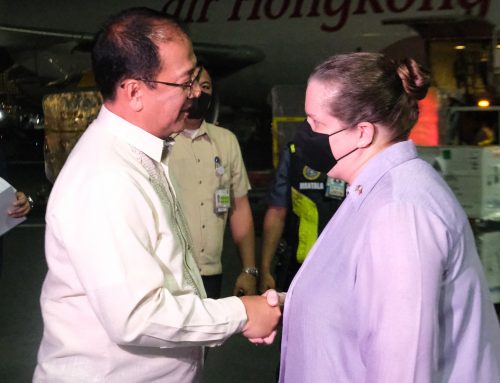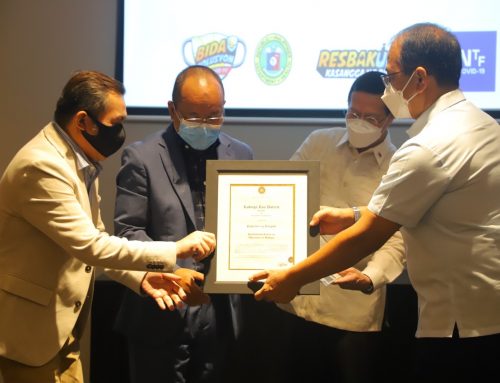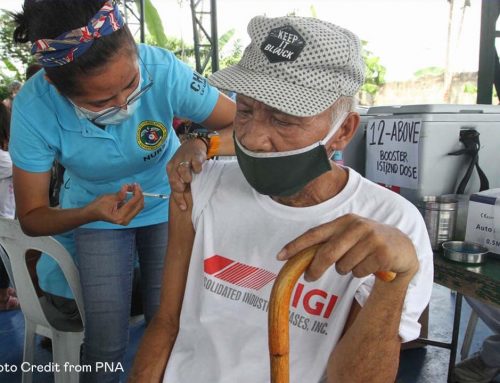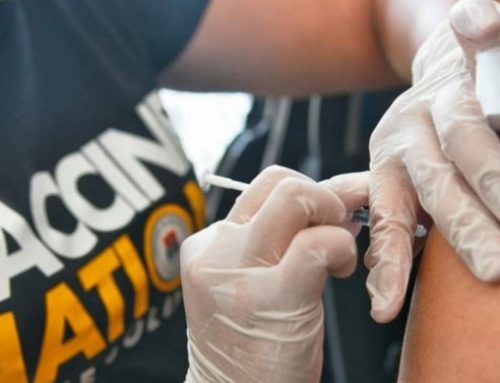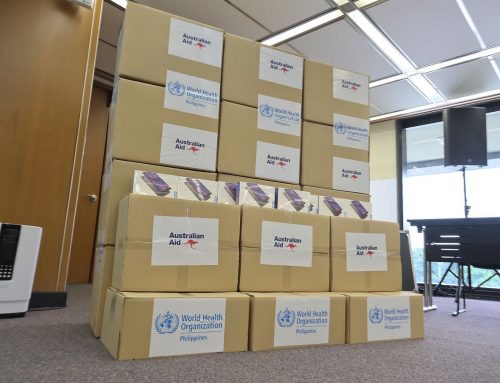MALACAÑANG PALACE, MANILA — As the government continues to carry out aggressive measures to contain the surge in coronavirus cases, one of its top COVID-19 task force officials has called on the Filipino people to continue the efforts of mitigating the impact of the disease.
“The pandemic will not solve itself. We need people to continue to cooperate, to follow health protocols, to work together with the government,” Sec. Carlito G. Galvez, Jr, National Task Force Against COVID-19 Chief Implementer and Vaccine Czar said on Wednesday, April 28.
Galvez’s statement comes on the heels of President Rodrigo Roa Duterte announcement in his Talk to the People address that the NCR Plus Bubble will remain under the Modified Enhanced Community Quarantine (MECQ) classification until May 14.
“I’m sorry that I have to impose a longer modified enhanced community [quarantine] kasi kailangan [dahil] tumaas ang infections at mga ospital natin puno…Sumunod nalang muna kayo tutal para naman ito sa lahat,” Duterte said the weekly Talk to the People.
Not only a medical issue
The President said that the COVID-19 pandemic will be a “never ending story” until all Filipinos are inoculated, emphasizing the health crisis is not only a medical issue but is “now of national interest and maybe the survival of the Filipinos.”
“Itong mga ayaw maniwala, ayaw sumunod, akala mo walang batas, there is a national health emergency — with that comes the power of the State to control whatever there is to control whether it is a pandemic, epidemic, or whatever medical [emergencies],” President Duterte added.
“Kung ipipilit natin ang nakagawiang asal and behavior, hindi natin ma-sosolusyunan ang pandemya,” Galvez said, citing the current health condition in India, in which the country has recorded a total of 17,997,113 COVID-19 cases as of April 28.
He noted that although there have been positive developments throughout the world particularly in terms of the rising vaccination rate of countries, India’s worsening COVID-19 crisis is a sobering reality that nations must confront and address.
“We commiserate with them as our brothers and sisters. But their experience and ours show the virus is really still there. It’s causing pain, suffering and death,” Galvez said, pointing out that there is a lot to learn from the experience of India.
“We need to take a long hard look at how we do things and make sure we become stronger, more rational and more science-based in our policy decisions and implementation,” the Vaccine Czar added.
The government, he said, is doing everything possible to bring down the number of cases, but it is also the responsibility of every Filipino to protect themselves against the virus by strictly observing minimum health standards and protocols.
“Until we reach herd immunity, we should look out for each other and make people realize that it’s our individual responsibility to keep ourselves, our families and our nation healthy,” Galvez said.
More vaccines on the way
In his presentation to President Duterte, Galvez said the country expects to receive the bulk of vaccine supplies by the third and fourth quarters of this year
He said that 500,000 doses of Sinovac’s CoronaVac vaccines, the last tranche of the government-procured 1. 5 million doses due to arrive this month, will be delivered on April 29.
To date, the country has received a total of three million Sinovac vaccine doses, including the one million doses donated by the government of China.
“For this second quarter, your government is working hard for us to acquire close to 14 million doses of vaccines from five vaccines makers,” Galvez said.
For the month of May, Galvez said the government expects the delivery of about two million doses of Gamaleya’s Sputnik V, starting with the initial 15,000 doses that are due to arrive on May 1.
The Russian-made vaccines were originally scheduled to arrive on April 28, but their shipment was postponed due to logistical challenges.
Meanwhile, another two million doses of CoronaVac are expected to arrive next month, with 1.5 million doses set to be delivered on May 7.
These doses are on top of the possible delivery of AstraZeneca vaccines under the World Health Organization’s COVAX facility.
Galvez said for the month of June, the government is also expecting deliveries of about nine to 10 million vaccines. These are from Moderna (194, 000 doses), Sinovac (4.5 million), Gamaleya (two million), and AstraZeneca (1.3 million).
He said there is also a possibility that the country will receive 2,355,210 doses of Pfizer vaccines under the COVAX facility.
“By June, we expect to accelerate our vaccination with the increasing supply of 9 to 10 million per month, increasing steadily with the expected deliveries of our purchase orders during the 3rd quarter and 4th quarter of the year with 15 to 20 million doses each month,” Galvez said.
“We are expecting to receive a total 140 million doses by the end of year of 2021,” he added.
Among the vaccines that are expected to arrive in the third and fourth quarter are Johnson & Johnson, Sinovac, Gamaleya, AstraZeneca, Novovax, Moderna, and possibly Pfizer.
Galvez said the government is planning to increase the country’s daily vaccination rate of 500,000 to one million once the country starts receiving a steady supply of vaccines.
“Maganda po ang ginagawa ng Metro Manila Development Authority at ng NCR [LGUs], nagkakaroon na po ng simulations na ginagawa. Nagpe-prepare na po kami sa June pagdating ng mga vaccine na ang kanilang daily vaccination rate will be 120,000 in NCR alone,” he said.
Galvez said the government will expand its simultaneous vaccination of priority groups A1, A2 and A3 to other sectors.
The Inter-Agency Task Force for the Management of Emerging Infectious Diseases had earlier approved the request of the Department of Labor to inoculate an initial 5,000 minimum wage earners in time for the Labor Day commemoration on May 1.
Galvez said that part of the plan is to include A4 priority group or essential workers from the public and private sectors in the vaccination rollout starting June.
As of 27 April 2021, a total of 1,809,801 doses have been administered from the 3,415 vaccination sites across the country, data from the National Vaccination Operations Center showed.
At least 86% of the available 3,525,600 doses have been distributed. ###



